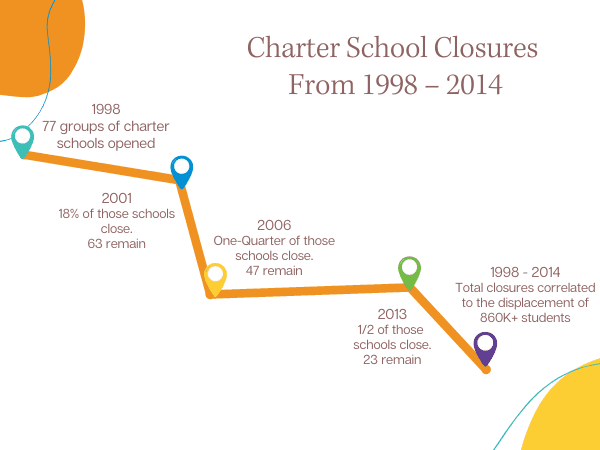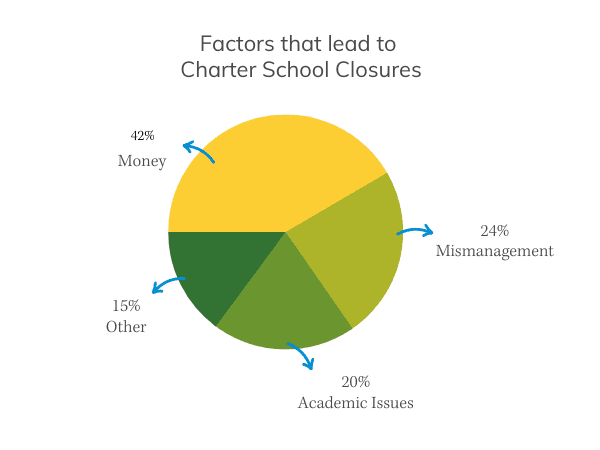As Election Day draws near, the battle between Proposition 30 (the California governor’s tax plan to help balance the state budget) and Proposition 38 (Molly Munger’s education tax plan) is heating up – as is the ultimate impact on charter school funding in California. Munger has spent more than $30 million on her ballot measure and has started running commercials that are in opposition to the governor’s efforts. Meanwhile, the governor has also raised millions of dollars for his measure and has vowed to begin non-stop campaigning.
If this were not enough to make for an interesting finish to the campaign season, a few additional factors are at play. Munger’s brother, Charles Munger, Jr., is funding an independent expenditure committee that is also spending money against the governor’s ballot measure. With all of the dollars being spent on competing campaigns, both measures are polling below 50%, which means it’s possible that education could get no additional money from taxpayers, charter school funding will be impacted, and the state budget will still be wildly out of balance after the election. All of these factors have led to Carol Kocivar, the head of the PTA and backer of the Munger proposition, to try to broker a peace treaty between the governor and Molly Munger. The effort has not been successful in either camp.
In the backdrop of all of this is Proposition 32, which the state’s unions are heavily opposing. Prop 32 would place severe limits on organized labor’s ability to contribute to candidates and campaigns, and would restrict their ability to collect union dues for political purposes. Defeating the measure is the union’s number one priority, and the money spent to fund the opposition is money that would otherwise go to support the governor’s ballot measure.
For charter schools preparing school budgets, we suggest they budget conservatively with the assumption that neither Prop 30 nor Prop 38 passes. The general consensus in the world of political consultants is that with the campaigns deepening their opposition, it will be difficult for either measure to pass.
For more information on how the California state budget may impact charter school funding, see Understanding the California State Budget Impacts on Charter School Funding, a recent Charter School Capital post.
UPDATE: As of October 15, Molly Munger pulled one ad attacking Proposition 30, according to the LA Times.
Month: October 2012
Why Do Charter Schools Close?
The data is clear: charter school enrollment remains steady, and support for charter schools is growing in many states.
In an analysis of the last three school years (2019-2022), The National Alliance for Public Charter Schools reports that enrollment gains in charter schools held steady. These numbers are also correlated to their report in 2021, Voting With Their Feet, which analyzed student enrollment data during the pandemic. “No matter how you examine the data, families from all walks of life are making different choices for their children since the pandemic began and many have chosen charter schools,” says Nina Rees, President, and CEO of the National Alliance.
This raises the question: with steady and growing support for charter schools, why do so many end up shutting their doors?
In a study by the Network for Public Education of charter school closures, examiners found that of 77 groups of schools that opened from 1998 to 2014, 18% were closed by the three-year mark, and a large proportion of failures occurred by the completion of the first year. More than one-quarter of the schools closed after five years, and about half closed after 15 years, which correlated to a displacement of more than 860,000 students.

For school leaders, knowing why charter schools close can inform planning and important operational practices, ensuring that schools can continue to offer sustainable, nourishing learning environments to students.
Here are the top reasons charter schools close according to an article from The Center for Education Reform.
Money
42% of charter school closures are due to funding. It’s well known that charter schools face unique financial challenges, so it’s important to get ahead of these issues as schools grow. Making sure schools have the money to meet operational costs, pay teachers and staff on time, and purchase learning technology and supplies can be challenging while staying advised of deferrals, delays, and reductions.
Mismanagement
24% of charter schools were found to have closed due to mismanagement. Unfortunately, the charter landscape does face controversy, and in the realm of fiscal mismanagement, there have been notable cases. Simple best practices include controls such as double signatures and ensuring that the person handling the money is not the person signing the checks. Reconciling bank statements, backing up documents, and encouraging whistleblowers can help spot and mitigate problems before there are negative consequences. Anti-fraud controls alongside financial self-audits can help avoid fraud.
Academic Issues
Fewer than 20% of charter schools closed due to academic issues. Overall, charter schools are known for meeting standards well, with a study from Stanford University’s Center for Research on Education Outcomes (CREDO) pointing to significant academic gains for African American and Latino students, as well as students whose first language is not English. In 2015, a CREDO study found that charter schools also outperformed public schools in urban areas. That being said, charters do close for academic reasons. Experts point to keeping up standards in reading and math, and being sure to offer holistic support to students as they grow.
An Optimistic View
Charter schools are the home to education’s innovators. While some charter schools do fail, the overall closure rate appears to be less than typical start-ups. Nina Rees, president and chief executive officer of the National Alliance for Public Charter Schools, had a positive take on the closure numbers: she believes charter schools actually should be closed if they do not meet accountability standards set by authorizers. Charter schools are “… constantly improving by opening new high-quality schools and closing down under-performing ones,” she said, arguing that it’s “a model that puts students and their needs first.”
Rees’s outlook connects to recent thoughts over how to measure post-pandemic charter school success, and supports best preparation and research practices when starting a charter school. Self-auditing can be a great way to track what’s happening at your school, and there’s a resource to help. You can access an on-demand webinar addressing how to use audit preparation to your advantage. Get access here.
